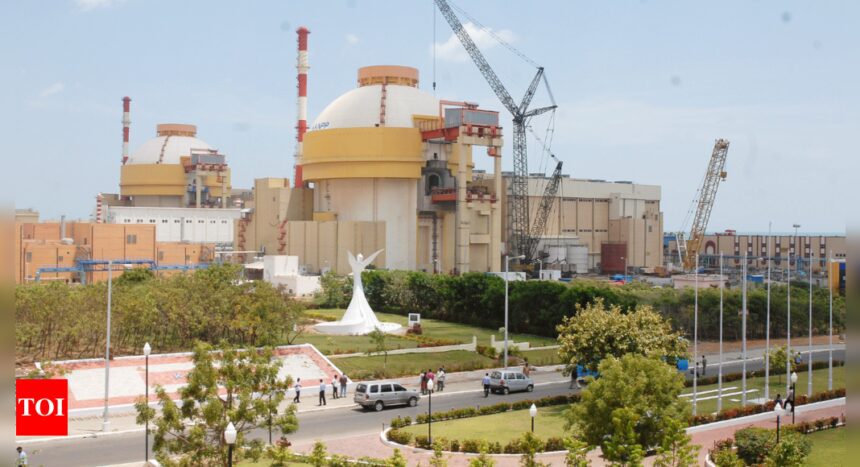The transportation of the VVER-1000 reactor vessel intended for the sixth unit of the Kudankulam Nuclear Power Plant (KNPP) in Tamil Nadu, India, is currently underway. This reactor vessel, which weighs 320 tons, was produced at the Atommash plant, a division of the Russian atomic energy corporation Rosatom, and is now being delivered to the construction site.
A reactor vessel, also known as a reactor pressure vessel, is a robust steel container designed to hold nuclear fuel within a nuclear reactor. Before it embarked on its sea journey, the vessel was first transported by specialized vehicles to the plant’s pier, where it was loaded onto a river vessel. This river vessel then took the reactor vessel to the seaport of Novorossiysk. From there, the reactor vessel was placed into the hold of a cargo ship for an 11,000-kilometer journey to India.
In 2025, a set of four steam generators for the sixth unit of the Kudankulam nuclear power plant is scheduled to be shipped. Currently, four new power units are under construction at KNPP, following Russian design specifications. The design, construction, and equipment supply are being executed by various divisions within the Rosatom State Corporation. Contracts for these activities have been established between JSC Atomstroyexport and the Nuclear Power Corporation of India Limited (NPCIL).
Valery Kryzhanovsky, the chief designer at OKB Gidropress, remarked on the advancements being made in equipment design. He highlighted a pursuit of enhanced safety measures and economic efficiency in their products. Ongoing developments include a reactor installation for nuclear facilities featuring improved power output, operational capabilities, and technical efficiency, intended for both domestic and international use.
The Kudankulam Nuclear Power Plant is projected to have a total of six VVER-1000 reactors, developed in collaboration with Atomstroyexport, with a combined installed capacity of 6,000 MW. The first reactor reached criticality in July 2013 and was connected to the grid shortly thereafter, commencing commercial operations on December 31, 2014. The second unit achieved criticality on July 10, 2016, and was linked to the grid in August.
Construction of units 3 and 4, which also utilize VVER-1000 reactors, commenced in 2017 and is currently 73% complete. This phase of construction has experienced significant cost and time overruns, with expenses increasing by nearly 73% and a delay of 72 months reported as of August 2024. In contrast, units 5 and 6 are about one-third complete and have not encountered such overruns in either cost or schedule.










